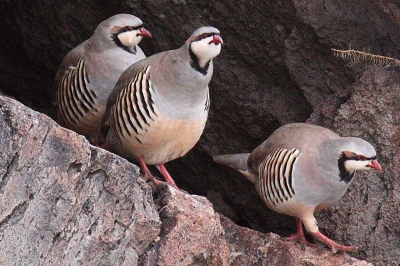

A receipted invoice, bill of lading, or other satisfactory evidence of lawful acquisition (copy of a valid game breeder license or valid dated receipt that establishes lawful acquisition or ownership) shall be presented for inspection upon the request of a conservation officer and must accompany any transportation of game birds.īirds (and eggs) imported into Indiana require a certificate of veterinary inspection (health certificate) from an accredited veterinarian in the state of origin before the game bird is shipped into Indiana.Įach cage or enclosure will be inspected by a conservation officer before a license may be issued. Note: you may not raise wild turkeys or ruffed grouse.Įach game bird must be lawfully acquired. The license holder is the one responsible for the record-keeping and other requirements of the law, however, so it may be best to have the parents sign the application form as well. There is no minimum age requirement for an application for a game breeder's license, so although the application asks for a driver's license number, it is not required. The DNR may issue to a resident of Indiana, upon the payment of a fee of fifteen dollars ($15), a license to propagate in captivity and possess, buy or sell for this purpose only game birds, game mammals, or furbearing mammals protected by Indiana law. A person who buys a game bird from an out-of-state breeder (licensed game breeders, only) must be able to show legal proof of out-of-state origin for all game birds possessed, including both a receipt and health certificate. A game bird possessed under a game breeder's license issued by the DNR may be released or sold for food purposes, breeding purposes, or for release. If you acquire a live game bird (ring-necked pheasant or bobwhite quail, including their subspecies and color phases), or purchase a live game bird, you must apply for a game breeder's license with the Indiana Department of Natural Resources (DNR) within five (5) days. To request an Upland Game Bird flock test, please contact the Indiana State Poultry Association at Raising Game Birds - License Requirements This flock test screens for Avian Influenza and participants will receive complementary biosecurity supplies and information.
CALIFORNIA NATIVE GAME BIRDS FREE
The Indiana State Poultry Association offers free health tests for Indiana game bird flocks. Depending on the breed, supplemental feed may be necessary. Once birds are mature they can be placed on a 18% protein game bird feed. After 6 weeks maintain a 20% protein grower feed. This will also provide supplemental food in the form of leaves, fruits, or insects and encourage foraging behavior.ĭuring the first 6 weeks, chicks should be fed a game bird starter, this normally consists of about 30% protein (chicken starter is not suitable for game bird chicks). Pens should include vegetation to provide shelter and areas to roost. An exterior barrier outside the enclosure is recommended to keep predators from approaching the pen and causing distress. Therefore, it is important to keep birds away from other animals or loud noises that may cause stress. It is also necessary to keep wild birds from entering the enclosure and potentially spreading disease.

In general, the pens should be fully enclosed and include a fenced-in run to protect against predators and keep birds from escaping. Local ordinances may have specific regulations about outdoor pens for upland game birds. Outdoor pens are suggested for larger game birds. Allow about one square foot per bird in these cages.

Smaller birds such as quail and chukars can be raised in wire pens. Pheasants require slightly lower temperatures. Gradually decrease heat by 5 degrees each week. Once chicks arrive, maintain temperatures at about 95 degrees Fahrenheit underneath the heat source during the first week.

The feeders and waterers should be easily accessible yet not too large so that the chicks fall into them. Provide chicks with a heat source, either a radiant propane brooder or an electric heat lamp. Using flat paper bedding like newspaper may help the first few days to prevent the young chicks from eating the bedding. Bedding can consist of chopped straw, wood shaving (soft shaving preferred) or ground corn cobs. The area should be located in a quiet and safe location where the chicks will not be frequently disturbed. Provide a clean brooding area for the incoming chicks.


 0 kommentar(er)
0 kommentar(er)
